Switzerland’s Local Culture On my first trip to Switzerland, I was charmed by its postcard-perfect view of blanketed crests, still lakes, and impossibly interesting, photogenic towns. But after living there for a few months, I found that the excellence of Switzerland is not fair in its geology. It lives within its individuals, conventions, and way of life.
Swiss culture is a delightful mix of traditional lavishness and cutting edge effectiveness. One day, you’re swept up in a centuries-old bovine parade in a minor snow capped town. Another, you’re speeding through Zurich’s high-tech financial district on a high-speed train.
From four-hour-long fondue suppers to the odd Fasnacht carnival when all the city gets to be one big masked party, Switzerland has its form of history, community, and creativity.
In this direct, I’ll talk about the interesting perspectives of Switzerland’s nearby culture and how to encounter it truly and sustainably.
Whether you are going by, moving there, or fair curious, I will give you insider tips, individual suggestions, and covered up insider facts to offer assistance you encounter going to Switzerland as a nearby would.
Understanding Switzerland’s Cultural Diversity
Of all the things that shocked me about Switzerland, it wasn’t the breathtaking scenes or the exact prepared plans. It was the cultural assortment found in such a little nation. It’s like four nations in one, with its dialect, traditions, and way of life.
Four Dialects, Four Worlds
Switzerland has four national languages:
German (approx. 62%) – The biggest cities are Zurich, Bern, and Lucerne.
French (around 23%) – Largely talked in Geneva, Lausanne, and Montreux.
Italian (about 8%) – In Ticino, especially in Lugano and Locarno, individuals speak.
Romansh (less than 1%) – an uncommon dialect exclusively talked in Graubünden.
Each has its identity, and moving from one to another can feel like passing into a different country. I keep in mind catching a prepare from Zurich (where everything is super organized and effective) to Lugano, and all of a sudden, I was in Italy. Individuals were nicer, supper took longer, and the entirety city felt Mediterranean.
Personal tip: To get a taste of Switzerland’s social mix in one trip, take the Ice Sheet Express from Zermatt to St. Moritz. After 8 hours, you will pass through German, Romansh, and Italian-speaking ranges and see a few of the world’s most lovely scenery.
Swiss Identity: Different but Connected
Switzerland isn’t an isolated country, despite the dialect divisions. On the opposite, it flourishes on these differing qualities. One thing that intrigues me is that although individuals are talking French in Geneva and German in Zurich, they all have a shared Swiss mentality:
Timekeeping and avoiding time wastage are vital for the locale, counting the Italian-speaking territories.
In a town in Appenzell or a city like Lausanne, individuals have to visit intelligent nature. At ends of the week, climb, ski, or fair enjoy the mountains.
The nation respects a cherish conventions, cheese-making, celebrations, and so much more.
It took me years never to see it the same way once more. I once inquired a Swiss companion, “How do you all get along in spite of the distinctive dialects? “ He laughed and said, ‘Because we concur on the imperative things: chocolate, mountains, and great organization.’ And truly, he had a point.
Personal Tip: If you travel to Switzerland, make an exertion to experience at slightest two dialect locales. You’ll be surprised at how diverse however comparative they are. Spend time in Zurich and Geneva, or indeed superior, visit a little town in each locale to really get it the substance of Switzerland’s culture.
The social differences of Switzerland is what makes it special. It’s a land where you can begin your day with a croissant in Geneva, move on to bratwurst at lunch in Zurich, and settle down in the evening with a plate of risotto in Ticino, with totally diverse ambiances the entirety time.
Swiss Traditions & Customs
Switzerland is one of the most mysterious places, absolutely for its immovability in its conventions. The most modern cities still hold centuries-old traditions, lively and well and gladly celebrated. When I first moved here, I was captivated by how Switzerland consistently weds old-world conventions with advanced life. One day, you are walking past high-tech managing an account central station in Zurich, and the another, you are in a minute snow capped town, observing bovines parade through the streets.
So here I’m sharing a few of the interesting Swiss traditions I’ve had the joy of encountering and a few insider tips on how you can encounter a few of these uncommon occasions for yourself!
Alpabzug – e Cows Come Home
I will never disregard the first time I seen an Alpabzug. In September, while I was climbing in the Bernese Oberland locale, I listened the sound of removed cowbells chiming up from the mountains. When I come to the town, a parade of lavishly embellished dairy animals with immense bells and colorful bloom crowns was being driven down from the snow capped knolls to the valley for the winter. They strolled between houses.
This custom takes put each fall in little towns all through Switzerland. It’s not as it were almost moving cows. It is a celebration of Swiss farming culture. Local people come to observe, taste new apple cider, and test conventional cheese, wieners, and custom made bread.
Personal Tip: For an true experience, skip the bigger traveler occasions and head to Appenzell or Lauterbrunnen for a littler, insinuate Alpabzug.
Fasnacht: The Craziest Carnival in Switzerland
If you envision Switzerland is all arrange and calm, you’ve never been to Fasnacht. This end of the week is the Switzerland form of Carnival, and it’s wild, cacophonous, and unforgettable.
I was in Basel Fasnacht, the greatest of those, and it was like I’d fallen into another world. Wandering drummers and veiled artists ghosted the road, playing ghostly tunes as confetti fell like rain. People wore perplexing, carefully assembled ensembles (often lampooning politicos or world issues), and the entirety city was a 72-hour drinking spree that never stopped.
What’s the best portion? Not at all like most carnivals that start in the evening, Fasnacht in Basel begins at 4:00 AM with the Morgestraich, at which the entirety city goes dim, and the lanes are enlightened with thousands of lights. It’s excellent, bizarre, and a touch surreal.
Personal Tip: If you discover Basel Fasnacht is a small as well much for you, Lucerne Fasnacht is a more compact but similarly dynamic Fasnacht option!
Sechseläuten – The Burning of the Böögg
It was one of the most abnormal Swiss conventions I had ever listened of, and I knew I had to see it with my claim eyes. Zurich has a mammoth blaze in the center of the city every April; to begin with, they construct a snowman (known as the Böögg) and at that point burn it to decide how the summer will be.
The concept is simple: the faster the Böögg’s head detonates, the hotter and sunnier the summer. The city turns up to watch, chow down on frankfurter, drink lager, and hold up for the huge minute. One year, I was there when the head of the Böögg took its sweet time detonating wanna know what? It was one of the rainiest summers on record!
Insider Tip: Sechseläuten is best delighted in with a neighborhood companion or family. Zurich local people set up grills around the campfire. It’s a superb vibe!
The Silvesterchlausen: Appenzell’s Unused Year’s Tradition
Thanks to pure chance, I found this convention. When I gone by Appenzell in early January, I taken note bunches of men in colorful outfits and expansive bell-covered caps formed like whole towns and churches. They were moving from house to house, singing antiquated yodeling chants to wish people the best of fortune for the modern year.
It turns out this is Silvesterchlausen, a Unused Year’s custom that happens twice, on Dec. 31 and Jan. 13, on the ancient Julian calendar. The ensembles, the music, and the by and large air transported me back in time.
Personal Tip: If you’re in Switzerland in early January, consider going by Appenzell instep of one of the major cities for an exceptional experience.
Swiss National Day – A Magnificent Celebration on August 1st
Switzerland’s adaptation of Freedom Day goes off on Admirable 1st, but the celebrations, unlike so numerous uproarious and garish lavatory slow down styles in other nations, are a small calmer and more traditional.
I went through my to begin with Swiss National Day in a mountainside town close Interlaken, and instep of wild firecrackers and parties, I found local people holding grills, light strolls, and alphorn exhibitions. At night, the valley was brightest when campfires burned all over the mountains, a centuries-old tradition.
The occasion basically resounds with a sense of celebration in the wide open. Of course, in greater cities such as Zurich and Geneva, one will discover greater firecrackers, but the genuine charm is the countryside.
Insider Tip: Attempt to involvement a small village celebrating Swiss National Day. It just seems more genuine and uncommon than the city celebrations!
Swiss Social Etiquette
I had fabulous conduct when I came to Switzerland, or I thought so until I figured out how much higher the Swiss bar of behavior is! From the desires of punctuality to how to welcome your individual towners, there are implicit rules that the local people tolerate by, and if you’re attempting to fit in, it’s best to know what they are.
Initially, I made parts of small botches, like welcoming individuals the off-base way or receiving generally more casual behavior in certain situations. But over time, I learned around Swiss social interaction and what is considered courteous. If you are arranging to visit Switzerland or move here, underneath are a few of the most critical rules of social etiquette to keep in mind (and a few of my individual experience!).
Greetings – Thewiss doesn’t mess around!
One of my most punctual slips in Switzerland happened when I amplified my hand too before long. In some societies, a simple “hey” combined with a handshake (or indeed a gesture) suffices. But in Switzerland, greetings matter a part, and who you’re saying hi to decides how you do it.
-
For a formal or business setting, → an sincere handshake with eye contact is the trick.
-
With companions & associates, → it is common to welcome with three kisses on the cheek (right-left-right). Yes, three! Not two!)
-
For first-time presentations → A neighborly Grüezi (Swiss German), “Bonjour” (French), “Buongiorno” (Italian), or “Allegra” (Romansh) works wonders.
I once passed a Swiss colleague with an all-purpose “Hi” and wave, and I think it came off as a small as well loose. I would have favored a firm handshake or at slightest a couple of cheek kisses!
Personal tip: If you’re not sure about the three kisses, hold up and see what the other individual does first; a few Swiss are impeccably Alright with fair a handshake!
Punctuality – Uncertainties, Ands, or Buts about Being Late
In Switzerland, it’s vital to continuously arrive punctually.
I experienced this firsthand when I arrived five minutes late to meet a Swiss companion for coffee in Zurich. She wasn’t inconsiderate approximately it, but she did decently casually say, “You’re a small late.” That articulation served as a stark update to me. There is no “fashionably late” in Switzerland, not for a trade assembly, not for a supper reservation, and not indeed for a casual meet-up.
-
For commerce gatherings, → it is standard to arrive at the correct time (or indeed 2-3 minutes early).
-
For social occasions: → 5 minutes early is best, or exactly on time.
-
Trains, buses, and arrangements: → Swiss transportation and plans are clockwork, so continuously arrange ahead!
Personal Advice: When you’re late, send a message. Indeed a 2-minute delay ought to be famous. The Swiss love politeness!
Quiet Sundays – Don’t Mow Your Lawn!
I will never disregard the first Sunday. Inside minutes, my neighbor thumped on my entryway and tenderly told me that Sundays are “Ruhetage” (rest days) in Germany, and there ought to be no uproarious exercises (like vacuuming, boring, or cutting the garden), as it’s considered bad manners.
Sundays are a day of peace in Switzerland, a time for family walks, comfortable suppers, and communing with nature. Most shops, but those in prepare stations and air terminals, near on Sundays, and a few loft buildings indeed debilitate doing laundry.
What’s affirm? I appreciate taking strolls, perusing, and assembly companions for a calm coffee.
What’s NOT affirm? Making domestic repairs, playing boisterous music, or working control instruments are not acceptable.
Tip for Yourself: Do the Laundry on Sunday. Please review your apartment’s cleaning rules. In some places, it is through and through illegal!
Cash is Lord – Indeed in a High-Tech Country.
Sweden is one of the most present day, mechanically progressed nations in the world, and you’d anticipate credit cards/digital installments to be a given all over. NOPE! Cash remains in common use, particularly in mini-marts, pastry kitchens, and open air markets.
I learned this the difficult way when I gone to an delightful mountain eatery in a farther Swiss town and endeavored to pay with my card, only to discover a sign that examined Nur Bargeld (Cash as it were). Luckily, there was a thoughtful local who took me to the closest ATM!
-
If you are traveling to country zones, make sure that you continuously have a few Swiss francs (CHF) with you.
-
Most bigger shops acknowledge cards, but small businesses are more likely to favor cash.
-
The neighborhood portable installment stage Twint (a web expansion of the smartphone app) is exceptionally common.
Insider Tip: When going by a farmers’ showcase, bakery, or mountain restaurant, continuously accept cash-only unless you see a card machine!
Swiss Cuisine
If there’s one thing I learned exceptionally, exceptionally before long after I moved to Switzerland, it’s that the Swiss take their nourishment truly. Before my entry, I thought Swiss cooking comprised exclusively of chocolate, cheese, and fondue. But after living here and eating through places, I realized Swiss food is a delightful mix of robust elevated passage, refined impacts from France, and then northern Italy.
From melty cheese dishes delighted in by the fireside to firm rösti that goes with anything, Swiss food is consolation food, convention, and high-quality fixings. Come connect me on a foodie enterprise of some of Switzerland’s most celebrated dishes and my recommendations!
Fondue: The Best of Swiss Food
I can keep in mind; I still keep in mind my first Swiss fondue. It was winter in Zermatt, and I ventured into a cozy, chalet-style eatery at the conclusion of a long day of skiing. The server brought over a steaming pot of cheese with 3d shapes of new bread, softened cheese, and garlic floating through the air.
Once I plunged my first piece of bread into the thick, velvety blend of Gruyère and Vacheron cheese, it got to be clear to me that fondue is more than fair nourishment; it’s an encounter. Sharing a pot of fondue with companions can appear like a cozy, pleasant convention, and in Switzerland, everyone has their possess strategy of expending it.
Swiss Fondue Rules:
-
Never twofold plunge! Continuously take one plunge for each bite!
-
(If you lose your bread in the cheese, you may have to purchase a circular of drinks, depending on neighborhood custom.)
-
Best matched with white wine or hot tea. Maintain a strategic distance from drinking cold refreshments, which can ruin the digestibility of the cheese!
The Best Fondue of My Life Individual Tip: Gruyères is the domestic of the celebrated cheese. And if you’re going to, be sure to halt at Le Chalet de Gruyères for a really extraordinary fondue experience!
Swiss Rösti: Fresh Potato Goodness
If there’s any national consolation food in Switzerland, it’s got to be rösti. It’s a golden, firm potato dish (kind of comparative to hash browns, as it were way better!). This dish started as a farmers’ breakfast in the Bernese farmland and has since spread all through Switzerland.
A neighborhood restaurant in Lauterbrunnen served me rösti for the first time, topped with liquefied cheese, bacon, and a browned egg. The dish was basic however delightful, and I’ve been fixated with rösti ever since. You will see other iterations:
-
Classic Rösti – crispy potatoes browned in butter.
-
Cheese & Onion Rösti – gooey, flavorful upgrade.
-
Rösti with Ham & Fried Egg – Is it more Swiss than a rösti?
Personal Tip: If you’re looking to test bona fide rösti, arrange it in Bern. It’s where the dish begun, and they make a few of the best!
Zürcher Geschnetzeltes – Zurich’s signature dish
The first time I ordered Zürcher Geschnetzeltes, I didn’t know what to anticipate. Be that as it may, the sight-dish plate won me over. It’s a velvety veal dish, more over the top all the time, with a intensely diminished white wine and mushroom sauce and frequently served nearby smooth, buttered tagliatelle or fricasseed rösti.
Swiss-German consolation food at its best – you must attempt it in Zurich!
Personal Note: If you’re in Zurich, halt by Restaurant Kronenhalle. One of the best forms of this dish is served at this memorable restaurant with Picasso and Chagall on the walls!
Alplermagronen – Swiss Mac & Cheese
Imagine a unique bend on Swiss macaroni and cheese. That’s Alplermagronen, a provincial mountain dish of pasta, liquefied cheese, cream, onions, and potatoes, prepared together and served with a dab of applesauce.
I had my first taste of Alplermagronen in a little cottage tall in the Swiss Alps after a long climb. The pairing of tacky, velvety pasta and sweet applesauce was really unforeseen however scrumptious. It’s the perfect feast after a long day of skiing or hiking!
Personal Tip: Alplermagronen is the best in mountain restaurants. If you spend a skiing day in Zermatt, Engelberg, or Jungfraujoch, fair see at the menu!
Swiss Chocolate – You Do Not Need More Than One Bite
You don’t require me to tell you that Swiss chocolate is famous around the world, but believe me when I say that eating it in Switzerland is something completely different.
The first time I stepped into a chocolate shop in Geneva, I gawked at all the choices. The quality was remarkable, extending from sleek drain chocolate to strongly dull pralines. One of my best experiences in Switzerland included doing a chocolate-tasting visit in Zurich and learning how Swiss chocolate creators make their masterpieces.
Where to Find the Best Swiss Chocolate:
-
Läderach – Forresh, carefully assembled chocolate in delicious flavors.
-
Sprüngli – Aust-visit for its delicate chocolate truffles and the “Luxemburgerli” macarons.
-
Maison Cailler (close Gruyères) – Mind blowing chocolate factory tour!
Personal Tip: Get something different: “Chocolat Chaud” (hot Swiss chocolate). This is thick and wealthy and nothing like any hot chocolate you’ve ever had in the winter!
Experiencing Swiss Daily Life
When I moved to Switzerland, I knew to anticipate dazzling scenes and proficient public transport—but what intrigued me was Swiss every day life. From morning commutes to schedule end of the week visits to the market, everyday life here has a one of a kind charm that’s both schedule and exceptionally much a portion of nature.
If you need to do an noteworthy work of encountering Switzerland like a nearby, here’s what an standard day looks like and a few personal notes on how to get the most out of it!
Mornings: Air & Accuracy
The Swiss wake up early, and I cruel early. Back in the day when I arrived, I was flabbergasted to see at 06 AM individuals were as of now running or cycling. Numerous local people go on strolls in nature in the morning and halt by a bakery for a new Gipfeli (Swiss croissant) on their way to work.
Oh, and another thing that surprised me? Swiss trains and trams are NEVER late. The to begin with time I was running for a prepare in Zurich, I observed the entryways close exactly on time—not a moment early, not a moment late. I before long learned that if you’re running even 10 seconds late, you’re late!
Insider Tips: Need to encounter life like a nearby? Go for a morning walk by the lake or in the mountains. Swiss individuals cherish new air any time of the year!
Mid-Morning: Coffee Break Culture
Switzerland might not be as well-known for its coffee culture as Italy, but accept me, the Swiss cherish a break for coffee. There is ordinarily a morning break around 9:30 or 10 AM where colleagues meet for a fast coffee or Schale (Swiss-style latte) in offices.
Thanks to this spell of humankind (that’s what I’m calling it), the to begin with time I experienced it, I marveled at how, in spite of being a country of laborers, individuals here take the time to appreciate a relaxed minute. Swiss individuals like to sit down and appreciate coffee, indeed for 10 minutes, not at all like in other countries.
Personal Tip: If you need an bona fide Swiss coffee encounter in a cozy café, arrange a Schale (articulated sha-la), remain situated, and take your time. Don’t rush!
Lunch: Healthy & Simple Meals
Lunch is no casual issue in Switzerland. There are long snacks advertised at numerous companies, and local people get up from their work areas (no eating in front of a computer!). The suppers are by and large light but nutritious; new servings of mixed greens, soups, or rösti (Swiss-style fresh potatoes) come to mind.
One thing that stunned me? Numerous Swiss individuals bring their lunch from home. Switzerland has a noteworthy meal-prepping culture centered on solid eating and sparing cash. Eatery lunch menus can be costly if you eat out. Fair a straightforward dinner will effectively cost CHF 20 to 300.
Pro tip: If you need to encounter something less touristy and more commonplace for local people, look for a Migros or Coop grocery store: they as a rule have new, high-quality lunch sandwiches for amazing prices!
Evenings: Regeneration & Outside Activities
The Swiss don’t go home and observe TV after work. Instep, they go outside—regardless of the weather. Indeed on a ordinary weekday, I was astounded to see individuals climbing, cycling, or swimming in the lake. If you’re in Switzerland, connect the locals for an evening ambulation along the lakeside or a dusk climb. It’s the best way to loosen up after a active day.
Dinner is as a rule light and agreeable, often bread, cheese, and cold cuts or maybe than a filling cooked dish. A Swiss companion once had me over for supper; instep of a hot dish, we had Znacht, a spread of naturally heated bread, locally made cheese, and smoked meats. It was basic but delicious!
Pro tip: For the bona fide Swiss experience from the lounge chair, make your claim Znacht at domestic with new bread, cheese, and a few cured meats from Switzerland.
Embrace the Swiss Way!
Raise your hand if you think living in or going by Switzerland is all almost those breathtaking-looking mountains or that world-famous chocolate (OG-status chocolate is all I’m saying), but that’s not all there is to it! It’s about inundating yourself in the culture, conventions, and regular life that make this nation so special.
When I first came here, I was captivated by the way the ancient and new worlds exist in such harmony—one miniature, you’re riding a bullet prepare, and the following, you’re observing a centuries-old bovine parade in a languid town. Swiss living balances these focuses productively without superfluous complications, from being on time to getting a charge out of open air activities.
If you’re coming to visit or move here, my best exhortation is: live the Swiss way of life. Walk everywhere, trade genuine merriments, take off calm Sundays alone, and most imperatively, take your time to appreciate the little things.
What do you discover most intriguing around Swiss culture? Have you felt any of these traditions or every day customs? Let’s chat in the comments!







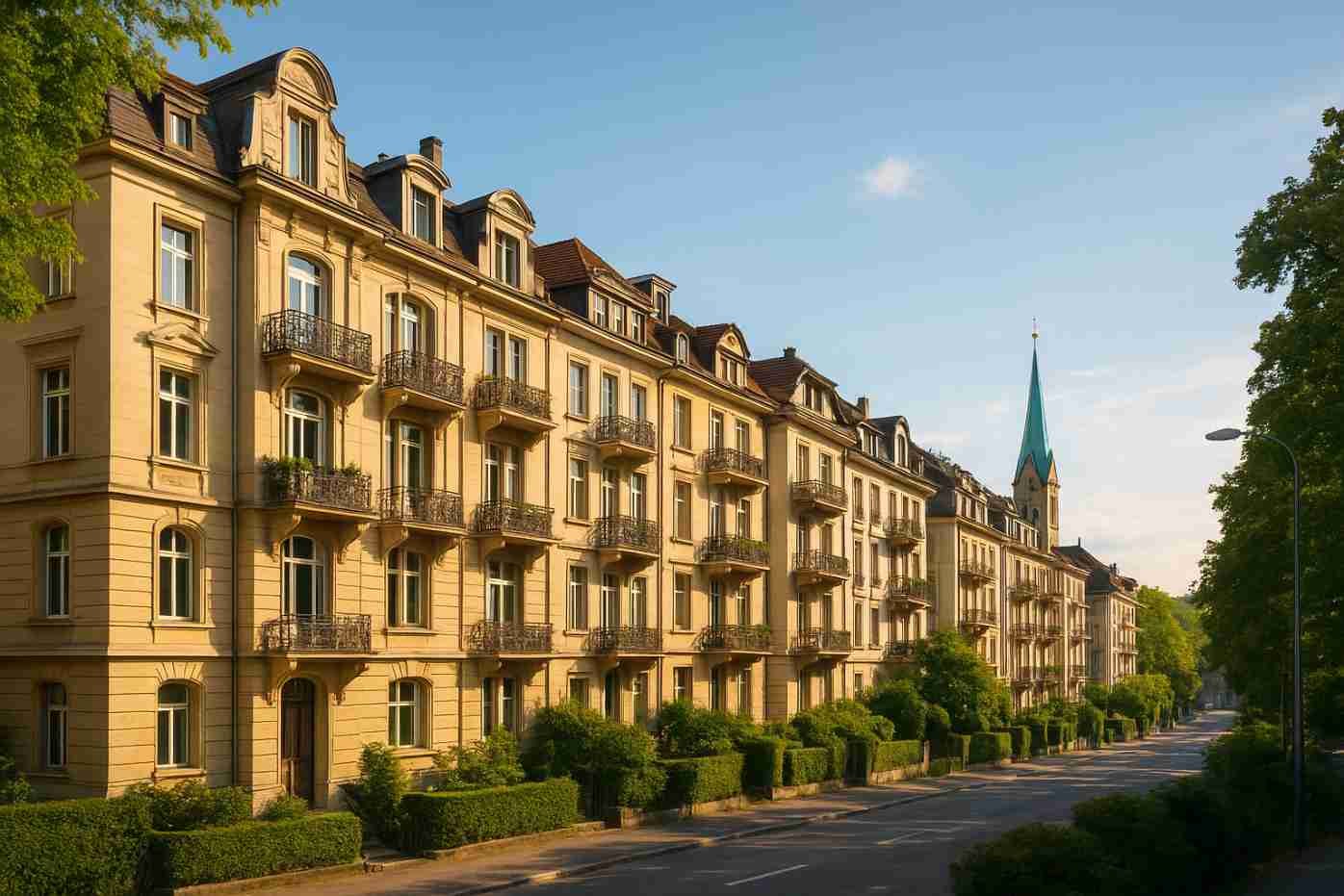


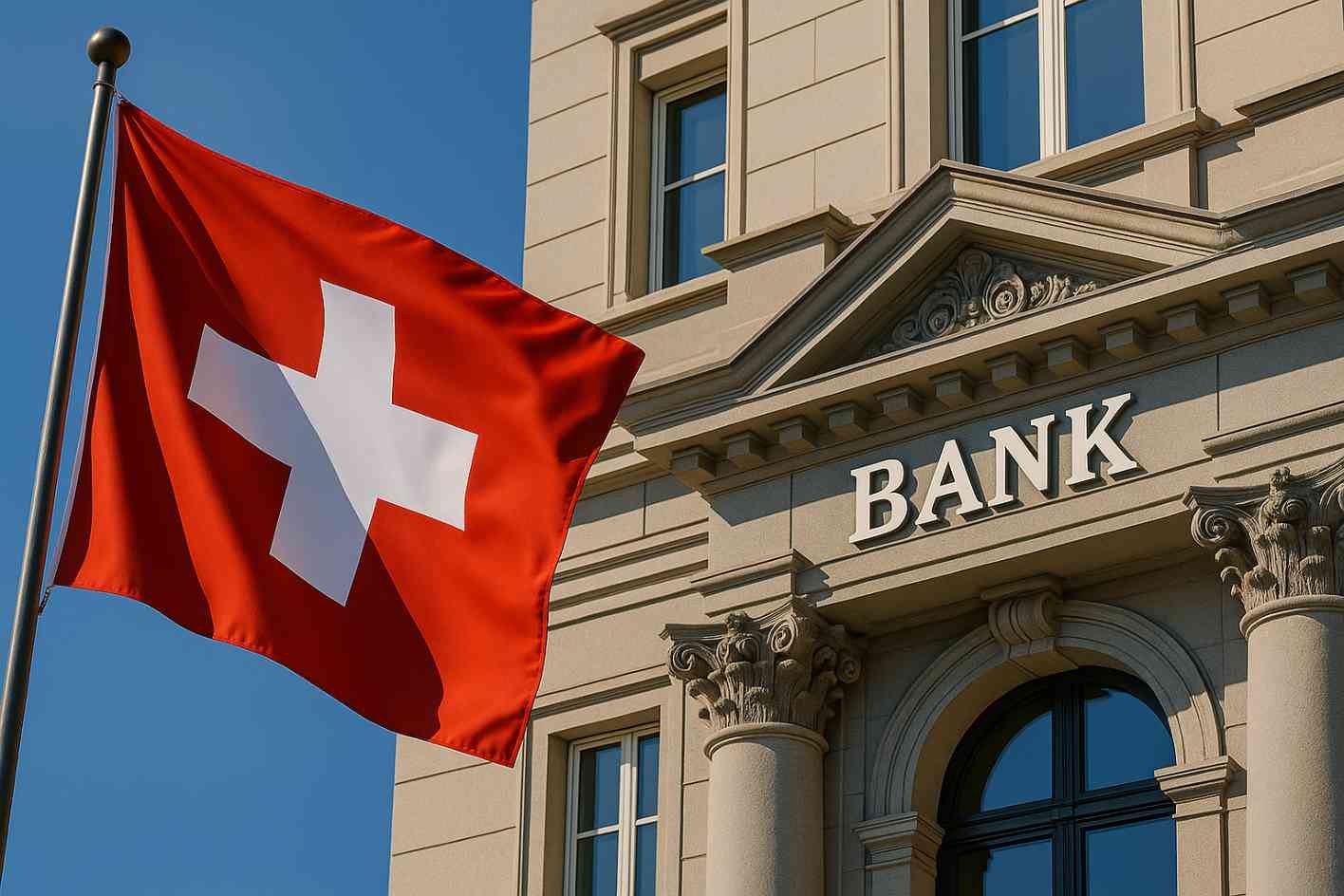
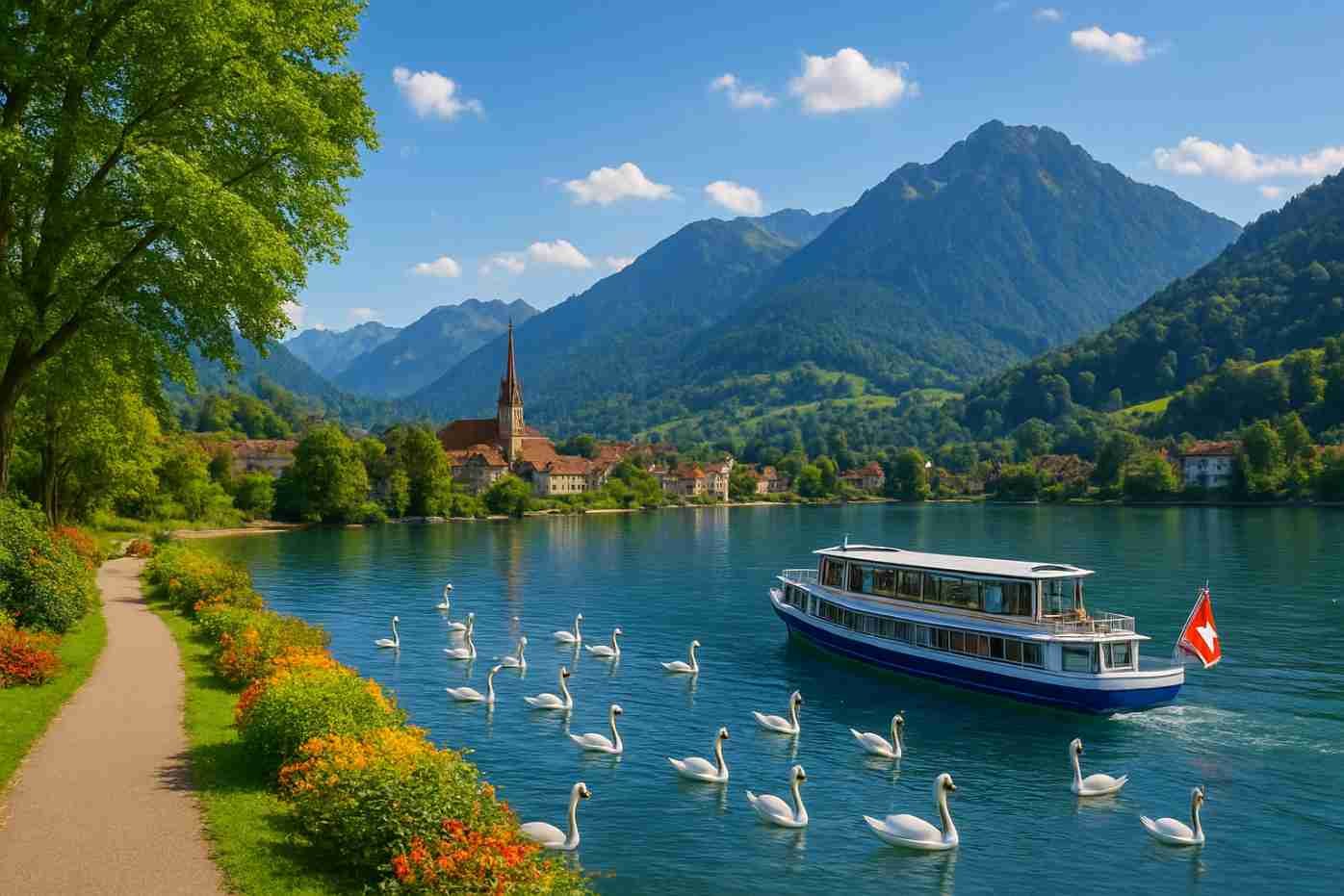


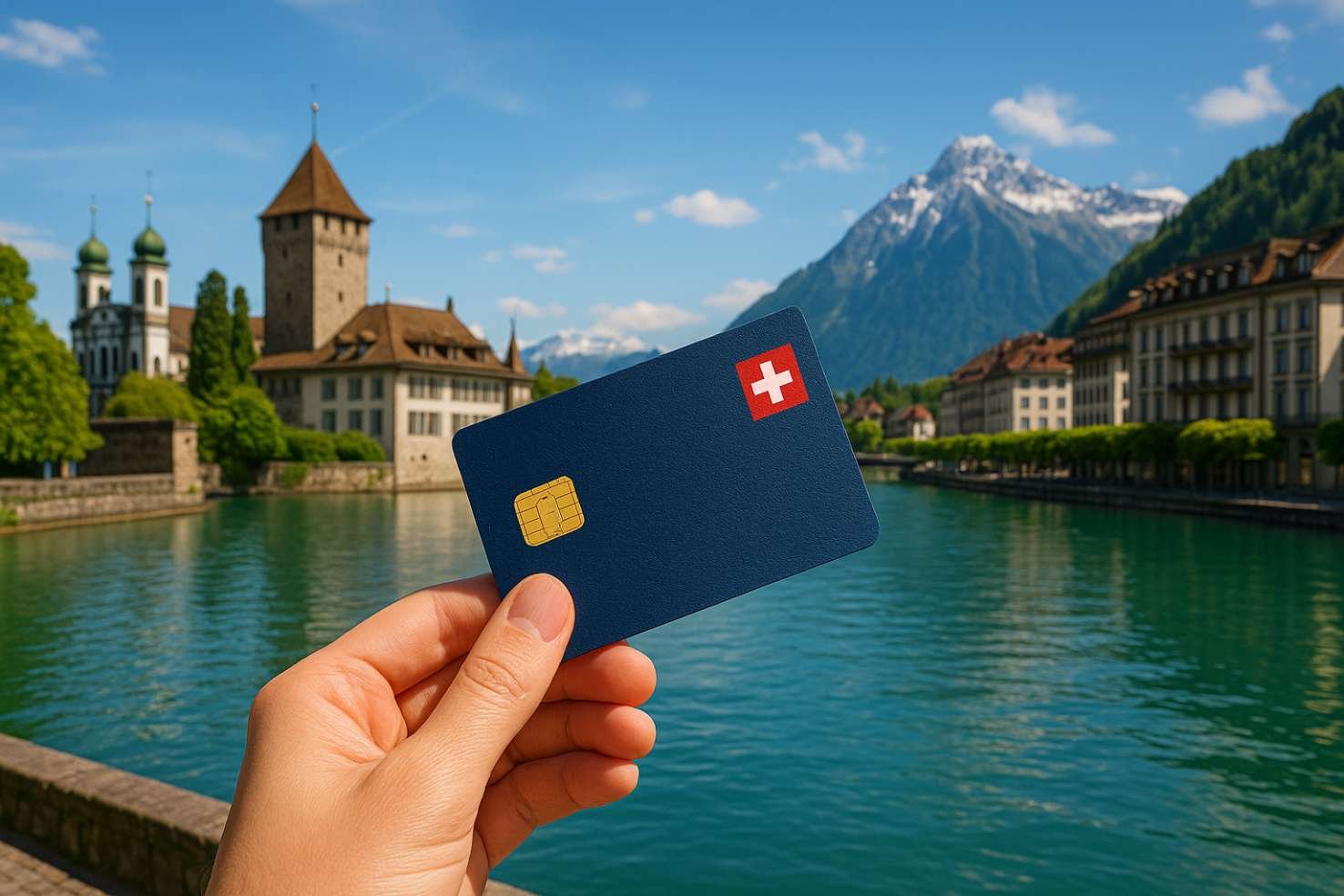


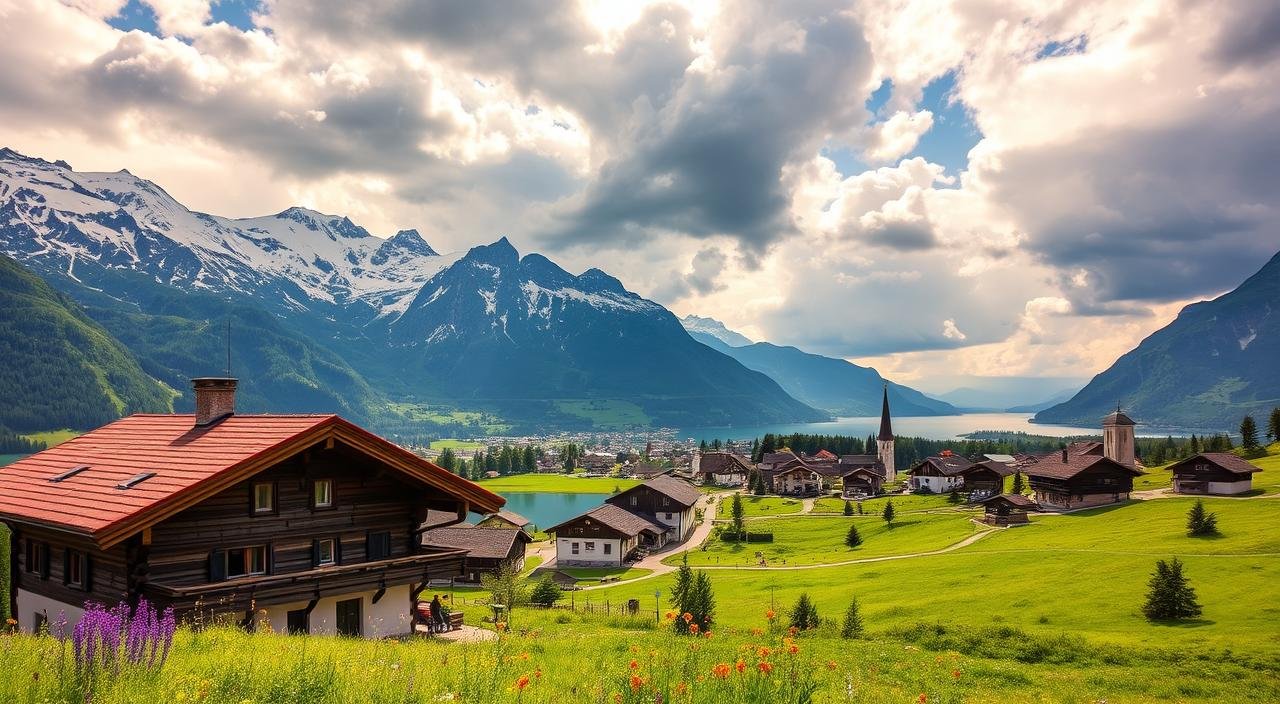
[…] local businesses, artisans, and farmers. By promoting farm-to-table dining, artisan markets, and local cultural tours, Switzerland ensures that tourism benefits the communities it touches, preserving both the […]
[…] voted. On Swiss National Day, I was celebrating not as a spectator, but as one of […]